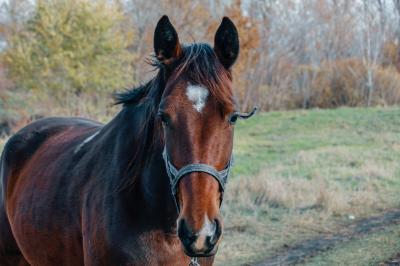
Last month we looked at some of the issues to consider before breeding from your mare.
The next question is whether to go for a natural cover or artificial insemination (AI).
There are a number of advantages to AI. The main one is that you can use a stallion from anywhere in the country, Europe or indeed around the world without travelling your mare a great distance.

A greater choice allows you to use a stallion with the best traits and characteristics that will match your mare, improve on her negative points and hopefully produce a quality foal.
For example, Paragon is one of four centres in the UK to receive Standardbred semen from a selection of stallions based in USA, which gives breeders here access to some of the best stallions in the sport.
AI also removes the dangers associated with natural service as stallions can be aggressive towards mares when serving them.
With AI there is also a reduced incidence of endometritis, or inflammation of the uterus, which is a natural consequence of natural cover. It happens to a lesser degree with AI and it is more easily managed.
If you decide on AI, the next question is whether to go for frozen or chilled semen. The advantage of frozen is that it can be sourced from around the globe and used at any time of the year and any time of the day (or night!) There are also stocks from stallions that are no longer alive.
A disadvantage with frozen semen is that there is a short window to use it. Mares have to be inseminated at no more than 12 hours before ovulation and no more than six hours afterwards for best results. This means we have to scan the mares more often in an attempt to get this timing right.
Chilled semen will survive in the mare for 24 hours and viable sperm at four days is commonplace. This means there is a wider margin for error and insemination can be carried out earlier, with confidence. Chilled semen also has a better success rate so long as delivery can be guaranteed.
For example, Paragon’s AI pregnancy rates from 2020 were 68.6 using frozen semen, and 80 per cent success using chilled semen.
There are no government or Defra regulations for artificially inseminating mares so I would advise that you use a veterinary practice which has signed up to the British Equine Veterinary Association’s voluntary code. It covers safety of the mare, prevention of infectious diseases, and ethics such as limits on breeding of closely related animals.
Mares ovulate approximately every 21 days and repeated scanning allows us to establish where she is in her cycle. They will be scanned twice a day in the lead up to ovulation and more frequently in the last 24 hours prior to insemination.
A disadvantage of AI is that there may not be a stallion present to encourage the mares to show when they are ready for breeding. Some mares appear to need to have the presence of a stallion for their cycles to develop normally. Some breed studbooks carefully regulate artificial breeding, and others do not allow it at all if the offspring are to be registered.
Once inseminated, mares are scanned at 14 to 16 days, looking for a viable pregnancy or to determine whether she will return into season. A further scan is performed at 28 to 35 days after which the risk of the embryo being reabsorbed declines, and hopefully you are on the way to welcoming a nice new foal into your yard.